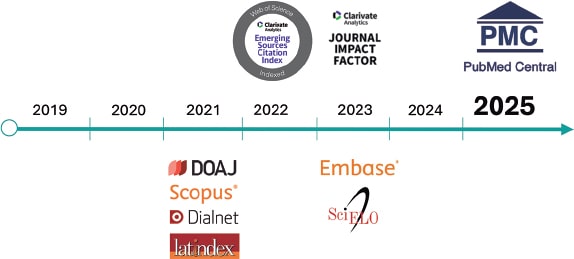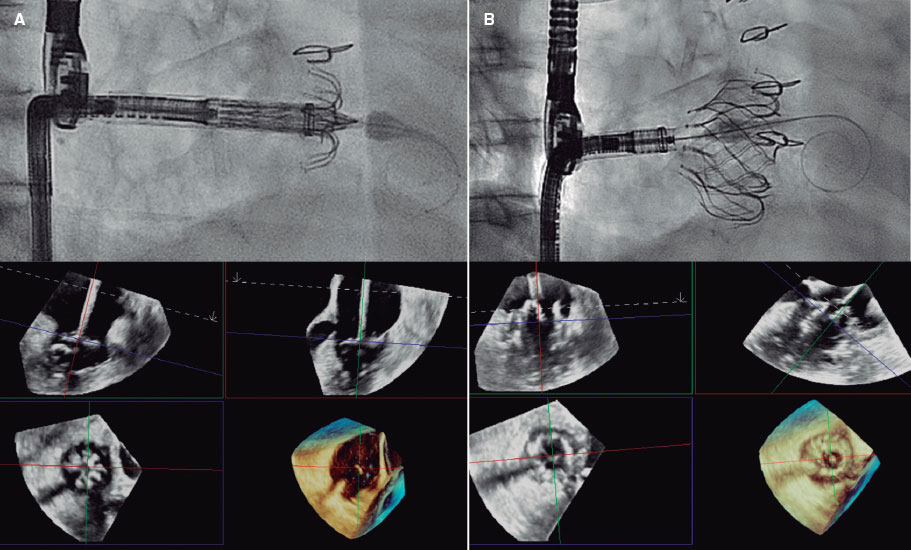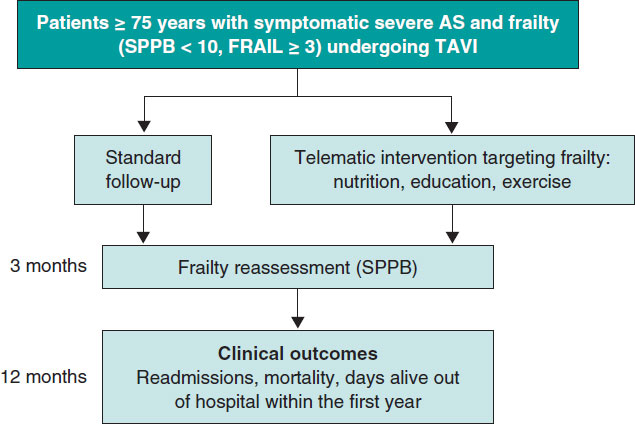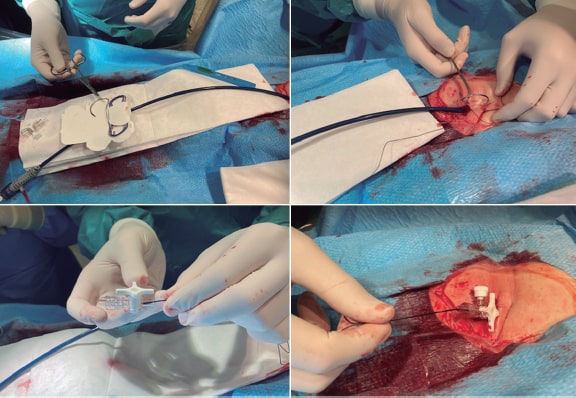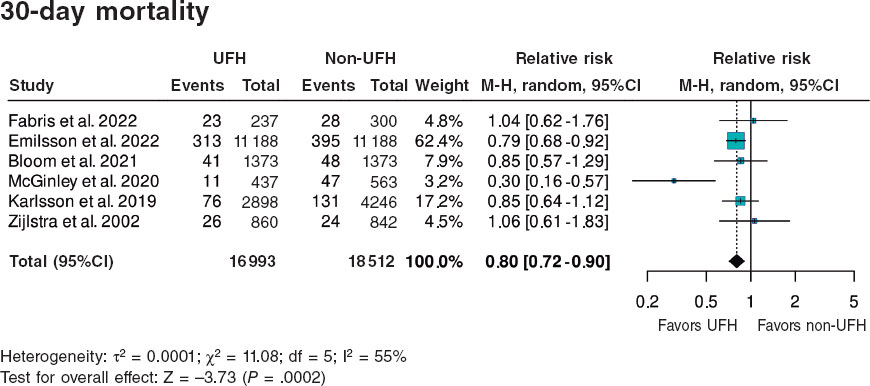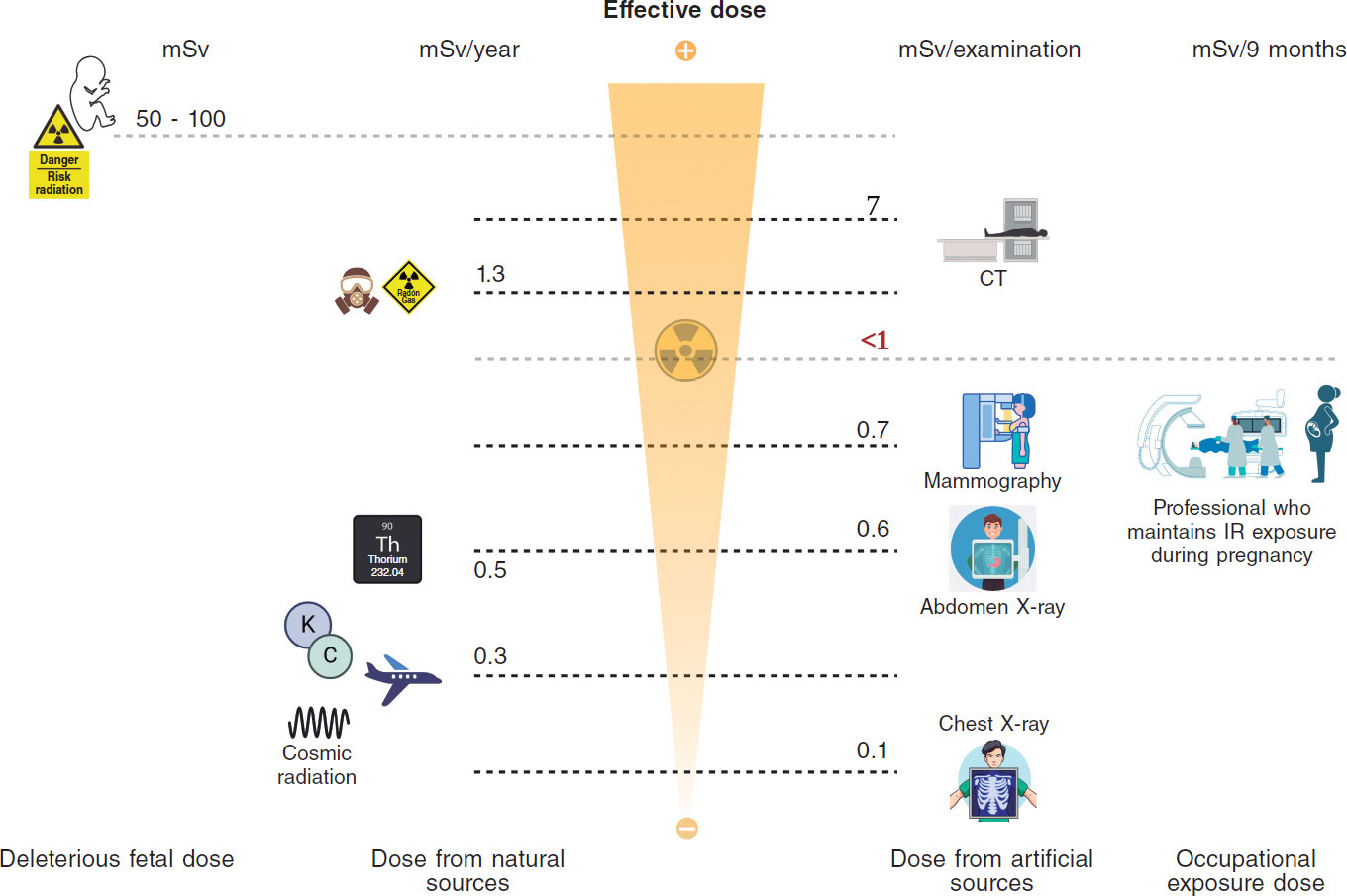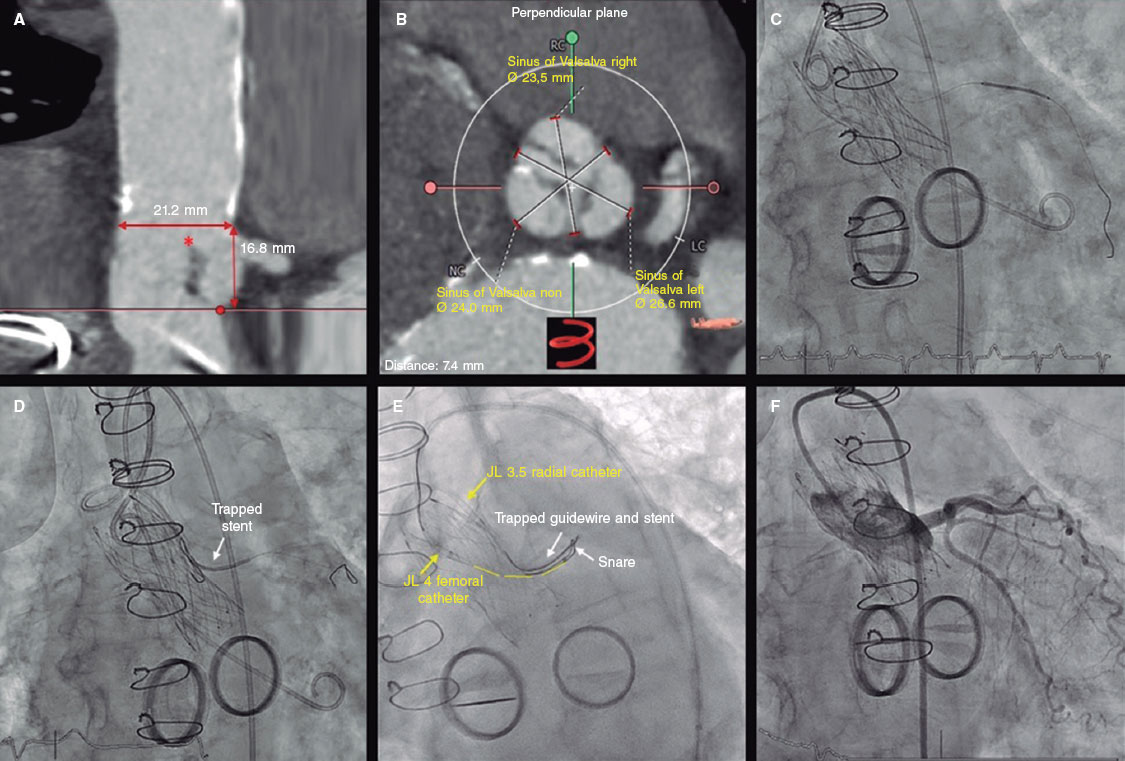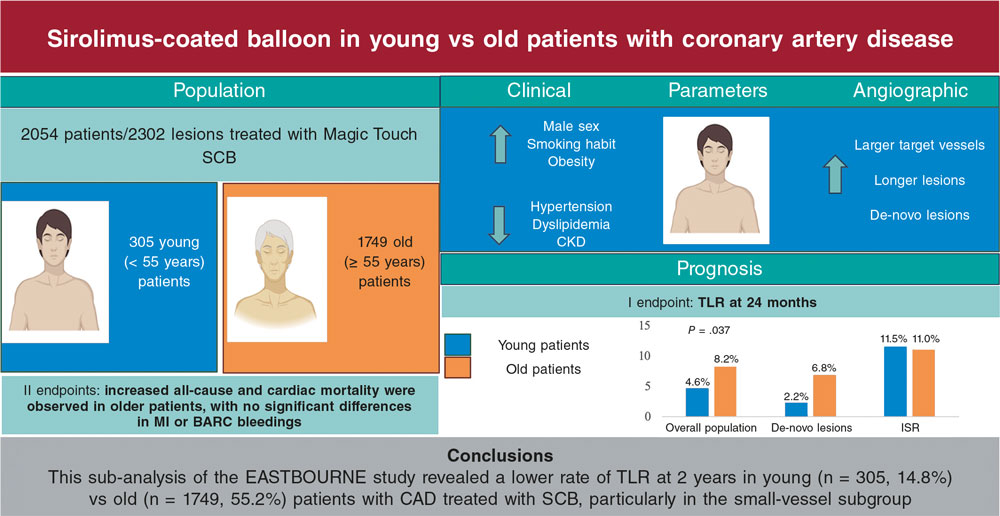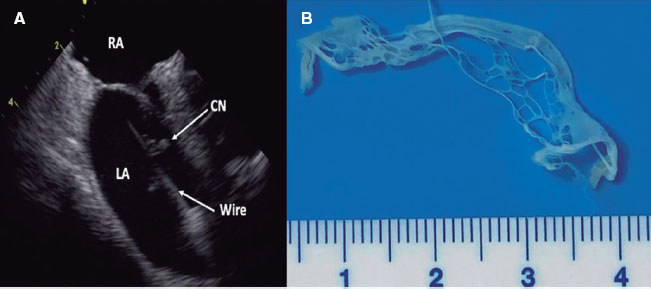Article
Debate
REC Interv Cardiol. 2019;1:51-53

Debate: MitraClip. The heart failure expert perspective
A debate: MitraClip. Perspectiva del experto en insuficiencia cardiaca
aServicio de Cardiología, Hospital Clínico Universitario de Valencia, INCLIVA, Universidad de Valencia, Valencia, Spain bCIBER de Enfermedades Cardiovasculares (CIBERCV), Spain
Related content
Debate: MitraClip. The interventional cardiologist perspective

QUESTION: Do you think there is enough evidence to indicate the use of intravascular imaging during percutaneous coronary interventions?
ANSWER: Currently, there is enough evidence on the benefits provided by intracoronary imaging modalities during percutaneous coronary interventions. Actually, the clinical practice guidelines recommend their use. For the most part, evidence has been collected on the use of these imaging modalities to optimize angioplasty. In this sense, the 2018 guidelines on revascularization published by the European Society of Cardiology give a class IIa recommendation and a grade B level of evidence to the use of intravascular ultrasound (IVUS) and optical coherence tomography (OCT) for the optimization of percutaneous coronary interventions (PCI) in selected patients.1 In the case of IVUS, these recommendations are based on multiple studies and meta-analyses that compared the results of angiography vs IVUS-guided PCIs and showed fewer events (including death, infarction or need for new revascularization) with the use of intravascular imaging modalities.2 Guidelines make a specific recommendation on the use of IVUS while performing an angioplasty on the left main coronary artery (class IIa, grade B level of evidence). The other indication for intracoronary imaging modalities established in the guidelines on revascularization is stent failure (class IIa, grade C level of evidence). Several observational studies have proven the utility of IVUS and OCT to detect the causes of thrombosis and restenosis and guide percutaneous treatment.
Q.: Which are the anatomical or clinical contexts with more evidence available?
A.: As I said the clinical context with more evidence available today is the optimization of coronary angioplasty with numerous randomized clinical trials and meta-analyses that confirm the occurrence of fewer events with IVUS-guided PCIs. This effect is especially relevant in the subgroup of patients with complex lesions (including long lesions, bifurcations, and chronic total coronary occlusions) who have a higher risk of events. During the PCI, imaging modalities allow us to determine the size of the stent, optimize its implantation, guarantee its adequate expansion and apposition, and detect possible complications like border dissections.2
The second context with more evidence available (in this case from observational studies) is stent failure. Regarding restenosis, imaging modalities can provide information on its causes (neointimal growth, neoatherosclerosis, underexpansion, disease progression in the stent borders) to determine the most appropriate treatment. Regarding stent thrombosis, intracoronary imaging modalities can detect whether stent thrombosis is due to mechanical causes (like stent underexpansion or incomplete apposition). Also, the OCT allows us to determine whether the cause is associated with an inadequate neointimal coverage of the struts or the rupture of a plaque at the borders or inside the stent.
The anatomical location with highest consensus of all regarding the advantages of using intracoronary imaging modalities (IVUS in particular) is the left main coronary artery. Several studies have proven the utility of this imaging modality to determine the severity of stenosis, the need for revascularization, and eventually to optimize angioplasty.
Q.: Is the IVUS and OCT level of evidence the same?
A.: Since the IVUS has been used much longer than the OCT, there are more clinical studies available on the use of the former, especially as an angioplasty guided imaging modality (to determine the size of the stent and optimize its implantation). However, 2 studies have proven the non-inferiority of OCT vs IVUS for the optimization of stent implantation. The ILUMIEN III study randomized 450 patients who received an OCT, IVUS or angiography-guided angioplasty. It proved the non-inferiority of OCT vs IVUS regarding the minimum stent area obtained. The OPINION study, conducted in Japan, randomized 829 patients to OCT or IVUS-guided stent implantation and proved the non-inferiority of OCT vs IVUS in the primary endpoint of target vessel failure including cardiac death, treated vessel related infarction or new revascularization on the lesion operated on. This prompted that the latest iteration of the revascularization guidelines published by the European Society of Cardiology to give the same class of recommendation (IIa) to the use of IVUS and OCT for PCI optimization.
Q.: What are the advantages of OCT with respect to IVUS during percutaneous coronary interventions?
A.: The OCT has 10 times more resolution than the IVUS, which allows much more detailed visualizations of the arterial wall and its interaction with the stent. This makes it much more sensitive to detect phenomena like stent incomplete apposition or stent border dissection. In the long-term assessment of the stent it also allows us to study the vessel tissue repair and determine whether the stent is completely covered by tissue. Regarding acute coronary syndromes, the OCT is much more sensitive to detect the presence of thrombi and it can characterize the underlying cause much better. In this sense, the OCT allows us to distinguish in vivo acute coronary syndromes due to the rupture of the plaque from those due to erosions, calcified nodules or non-atherosclerotic causes (such as spontaneous coronary artery dissections or embolizations). This is relevant to guide treatment because it can determine whether it is necessary to operate or just use conservative strategy.3
Also, the OCT offers several advantages in the assessment of the causes of stent failure. Regarding in-stent restenosis, it allows us to detect its underlying mechanisms like underexpansion, neointimal tissue growth or disease progressions. Also, the high resolution of this imaging modality has enabled the in vivo detection of neoatherosclerosis as a common cause for restenosis. The analysis of these mechanisms is essential to determine the best therapeutic strategy. For example, in the case of disease progression in the borders of the stent it will be necessary to implant a new stent. However, in cases of stent underexpansion it will be necessary to expand the stent with high pressure dilatations, in some cases, even use plaque modification techniques. If the cause of restenosis is neointimal growth a new stent or a drug-coated balloon can be implanted. Regarding neoatherosclerosis, at the moment there is not enough evidence to determine whether the best strategy is to implant a new stent or use a drug-coated balloon. Still, some data available suggest that both options may be useful.
Regarding stent thrombosis, the OCT allows us to demonstrate in vivo that this is often a multifactor phenomenon and that the cause is not only the lack of stent coverage (as it was initially thought with drug-eluting stents). Instead, it can be due to other factors like neoatherosclerosis with plaques ruptured inside the stent or around its borders, stent underexpansion, incomplete apposition or restenosis. Again, this is an important piece of information to guide the interventional treatment and correct the underlying cause.
Q.: Which cases would be eligible for using IVUS and which for using OCT?
A.: There are 2 anatomical locations where the IVUS is superior compared to the OCT: 1) ostial lesions, due to the impossibility to clean out the blood from the vessel to acquire good images on the OCT; and 2) the left main coronary artery, especially when the ostial segment is involved. Before, the size of the left main coronary artery was a limitation when performing OCT, but with the systems we have today we can see almost all left main coronary arteries unless they are too big. Several studies show the utility of IVUS to assess the severity of the left main coronary artery and for guidance purposes during the angioplasty. At this moment, several studies in the pipeline are assessing the use of OCT while performing angioplasties on the distal left main coronary artery. Probably in the mid and distal left main coronary artery setting, the OCT will be as useful as the IVUS. Maybe even more in the assessment of bifurcations. However, if the ostial segment is involved and we want to see it, we better use the IVUS. Another situation where the IVUS may be preferred over the OCT is to see kidney damage given the need to use contrast for the acquisition of OCT images. In this sense, I should say that the use of contrast can be optimized when performing OCT-guided angioplasties to avoid unnecessary angiographies. A single injection of contrast allows us to perform an angiography and an OCT at the same time. With a single OCT-pullback the reference areas can be selected, and the diameter and length of the vessel can be obtained avoiding the need to perform multiple angiographies.
The OCT is superior to the IVUS and should be the imaging modality of choice to assess stent failure (thrombosis and restenosis) because it is much more precise to determine the underlying mechanism. It is also superior for the assessment of acute coronary syndromes because it is much more sensitive to detect thrombi and distinguish acute coronary syndromes due to plaque rupture from those due to other mechanisms like erosions or non-atherosclerotic causes. The OCT is superior to the IVUS for the assessment of bifurcations because it allows online 3D reconstructions that provide relevant information on the anatomy of the bifurcation and can optimize the angioplasty. An important advantage of the OCT over the IVUS conventional systems is the possibility of a simultaneous registry with an angiography incorporated to the system that does not require the use of any additional software. This facilitates significantly the use of OCT to guide and optimize stent implantation because it offers an online co-registration of the angiographic location of each and every one of the images seen on the OCT.
Q.: What studies are necessary to establish the role of these imaging modalities during percutaneous coronary interventions?
A.: Regarding IVUS, several studies show that its use during the angioplasty can improve the prognosis of patients by reducing the occurrence of events. Regarding the OCT, the primary endpoint of the ILUMIEN IV study, currently in the pipeline, is to show that OCT-guided PCIs can improve stent implantation and reduce clinical events compared to angiography-guided PCIs only. The positive effects of using intracoronary imaging modalities are especially relevant in the subgroup of lesions with higher risk of failure (including long lesions, bifurcations, restenosis, and chronic coronary occlusions). Actually, it is in these patients in whom we should encourage the use of IVUS or OCT.
Beyond the evidence generated in the clinical trials, in order to promote the use of intracoronary imaging modalities, interventional cardiologists need to be trained on how to interpret them. At the same time, imaging systems need to improve to make them easier to use during the procedures. For example, the use of fast systems of image acquisition integrated in the cath lab that allow the operator to use the controls from the table, and co-registration of angiography are some of the tools that can improve the use of these imaging modalities.
Q.: What technical advances are available today or could be available in the near future regarding the OCT?
A.: Among the technical advances currently under research, the most relevant ones have to do with the possibility of estimating and assessing the physiological parameters from OCT acquired 3D reconstructions. This would allow us to use 1 imaging modality only (the OCT) to determine the need to treat and optimize the intervention.
Plaque characterization (especially calcium) using dedicated software is another important field of study. Ultrafast pullbacks will allow us to reduce the amount of contrast needed, and the combination of IVUS plus OCT in the same catheter are other advances being made today.
REFERENCES
1. Neumann F-J, Sousa-Uva M, Ahlsson A, et al. 2018 ESC/EACTS Guidelines on myocardial revascularization. Eur Heart J. 2019;40:87?165.
2. Räber L, Mintz GS, Koskinas KC, et al. Clinical use of intracoronary imaging. Part 1:guidance and optimization of coronary interventions. An expert consensus document of the European Association of Percutaneous Cardiovascular Interventions. Eur Heart J. 2018;39:3281-3300.
3. Johnson TW, Räber L, Di Mario C, et al. Clinical use of intracoronary imaging. Part 2:acute coronary syndromes, ambiguous coronary angiography findings, and guiding interventional decision-making:an expert consensus document of the European Association of Percutaneous Cardiovascular Interventions. EuroIntervention. 2019;15:434-451.

QUESTION: Do you think there is enough evidence to indicate the use of intravascular imaging during percutaneous coronary interventions?
ANSWER: The appearance of intracoronary angiography was a major breakthrough for the management of ischemic heart disease. However, the limitations of this imaging modality became evident right from the start. The arrival of intravascular ultrasound (IVUS) 30 years ago now and then the optical coherence tomography (OCT) brought significant advances regarding diagnosis and percutaneous coronary intervention. Although the independent studied that compared IVUS and angiography showed variable results, several meta-analyses1 reinforce the use of the former. On the other hand, although the OCT is much newer compared to the IVUS and there is less scientific evidence supporting it, the excellent quality of its images has turned it into the imaging modality of choice for the management of complex plaques, the detection of complications during the procedure, and the assessment of stent implantation both in the clinical practice and clinical studies.
Q.: Which are the anatomical or clinical contexts with more evidence available?
A.: Both imaging modalities have proven their best cost-effectiveness ratio for the management of complex lesions. In this context, both provide very valuable information in calcified lesions. However, each of them has a specific profile with important differences between the 2.
The left main coronary artery disease is the location where the IVUS has proven most beneficial because it can guide the procedure, but also in long lesions and chronic total occlusions. On the other hand, the effectiveness of IVUS in patients with conditions like diabetes or acute coronary syndrome has been confirmed in former studies.
The excellent quality of the images provided by the OCT makes it very attractive especially in 3 scenarios. In the first place, in cases of acute coronary syndrome where the angiography can show non clearly culprit stenoses, the OCT can detect the presence of dissections, eroded or ruptured plaques, small thrombi or vessel wall hematomas. The second scenario is in-stent restenosis, where it can identify underlying mechanisms like underexpansion, hyperplasia and neoatherosclerosis. Finally, it is the imaging modality of choice to study stent endothelization, a very important aspect if it can be relevant enough as to decide on the continuity or not of antiplatelet therapy and, above all, in the context of clinical studies
Q.: Is the IVUS and OCT level of evidence the same?
A.: To this day, and partly due to the fact that IVUS has been with us much longer, its scientific evidence is more solid since the OCT has less often been compared to the angiography and only to IVUS in a clinical trial.2 As a consequence, the clinical practice guidelines3 show the current scientific evidence available in the following recommendations and levels of evidence:
-
– IVUS in selected cases to optimize stent implantation: IIa B.
-
– IVUS to determine severity and optimize stent implantation in unprotected left main coronary artery disease: IIa B.
-
– IVUS or OCT to study the underlying mechanism of stent failure: IIa C.
-
– OCT in selected cases to optimize stent implantation: IIb C.
Q.: What are the advantages of OCT with respect to IVUS during percutaneous coronary interventions?
A.: Although the IVUS has 10 times less resolution than the OCT and, therefore, worse image quality, it is superior to the OCT in some aspects. The IVUS has a greater capacity to penetrate soft tissues (5-6 mm vs 1-2 mm of the OCT) and detects the total thickness of the vessel, which is an advantage when having to decide on the diameter of the stent in relation to the size of the vessel. Its second greatest advantage is that it does not require washing the artery to eliminate the red blood cells that complicate the performance of an OCT so much. Finally, in certain patients, especially those with left main coronary artery disease, and since no artery washing is required, both scientific evidence and image quality make IVUS the imaging modality of choice.
Q.: Which cases would be eligible for using IVUS and which for using OCT?
A.: The characteristics of the patient and the lesion condition the use of 1 imaging modality over the other. For example, IVUS is more adequate in cases of:
-
– Left main coronary artery disease, especially proximal: IVUS is supported by more scientific evidence as shown by the guidelines. On the other hand, in many cases, the arterial washout with contrast cannot be performed properly, which leads to suboptimal image quality with the OCT.
-
– Aorto-ostial junction, both in the left and right coronary arteries since, as we already mentioned, the OCT does not provide a proper image quality.
-
– Kidney disease or patients in whom the amount of contrast should to be limited: although a few alternatives to this have been described like the use of dextran to induce less kidney damage, in general, all these agents cause volume overload which is ill-advised in complex procedures. It is estimated that the use of OCT involves some extra 17 mL and 70 mL of contrast per case.
In the remaining scenarios, the superior image quality provided by the OCT is a very significant advantage, which means that it is the imaging modality of choice when the aforementioned situations don’t take place.
There is a subgroup of lesions where the OCT has become very popular. I am talking about bifurcations that amount to 15% of all the percutaneous coronary interventions performed these days. The use of intravascular imaging is highly recommended here since they are lesions with an associated higher rate of thrombosis and restenosis. Besides, the latter is difficult to treat, and a top level of excellence is advised in the results obtained that can be optimized with the use of imaging modalities, especially OCT. Having said this, we should always remember the limitation imposed by the use of additional contrast at the end of a complex case. Therfore, despite the fact that the image quality of IVUS is worse compared to OCT, at times it can replace it. The recent advances made in the design of new higher-resolution IVUS catheters can be an alternative to bear in mind when the use of OCT is somehow problematic.
Q.: What studies are necessary to establish the role of these imaging modalities during percutaneous coronary interventions?
A.: Since the left main coronary artery is the location where IVUS performs better and taking into consideration the current class IIa recommendation with grade B level of evidence, it would be very interesting to have studies available that would enable an upgrade to a class I recommendation. Regarding the left main coronary artery disease, these studies can also be very interesting for another reason. For example, the EXCEL and NOBLE clinical trials are no longer producing more evidence on the percutaneous revascularization of these patients. This means that «something new» should come up if we want to show additional benefits to be able to upgrade the levels of recommendations and evidence. Examples of these trials in the pipeline are (ClinicalTrials.gov):
-
– The OPTIMAL NCT04111770 clinical trial: an international, randomized, controlled, multicenter clinical trial where 800 patients will be randomized in a 1:1 ratio to undergo IVUS or angiography-guided percutaneous revascularization. Patients will be followed for 2 years after the index procedure.
-
– The INFINITE NCT04072003: a study with a similar design to the previous one with 616 patients with left main coronary artery disease with bifurcation types 1.1.1 or 0.1.1 according to the Medina classification. In the angiography group, patients will be treated with 2 stents and the implantation technique will be left to the operator’s criterion. However, in the IVUS group the lateral branch will be treated based on the lumen area as seen on the IVUS (in cases with lumen areas > 4 mm2 no stent will be implanted).
On the other hand, the situation with the OCT is different. This imaging modality has grown rapidly thanks to its excellent image quality. However, scientific support is not as strong. Added to the studies where this imaging modality is not the study primary endpoint but the tool to show the primary endpoint in subgroups of patients (acute coronary syndrome with or without ST-segment elevation and studies focused on the results of certain stents), it would be interesting to conduct clinical trials on the OCT. These studies primary endpoint would be to improve clinical results to increase the level of recommendation published by the guidelines. An example of this type of studies is the ILUMIEN IV: OPTIMAL PCI NCT03507777 where 3656 patients will be randomized in a 1:1 ratio to compare the result of angiography vs OCT-guided stenting at a 2-year follow-up.
Q.: What technical advances are available today or could be available in the near future regarding the OCT?
A.: Over the last few years, the following advances have been made regarding IVUS, some of them are still in the pipeline.
-
– High-definition IVUS: of up to 60 MHz and a superior image quality compared to the 20 MHz or 40 MHz IVUS. It is already available for clinical use.
-
– IVUS-angiography co-registration: this system integrates the information provided by the IVUS and the angiography in such a way that it can locate the artery of each spot analyzed by the IVUS. It is also available for clinical use.
-
– Dual-element IVUS transducer: one 35 MHz transducer to generate standard IVUS images plus another 70 MHz transducer to receive the second harmonic signals induced by the 35 MHz ultrasound. This dual transducer performs simultaneous analyses of the general anatomy through 35 MHz images and the media and adventitia layers through harmonic signals. It is still in the preclinical phase.
-
– Hybrid IVUS and OCT single transducer: undoubtedly this is the most advanced project of all by far, and it can acquire IVUS, OCT or OCT-IVUS images of the same spot with high sensitivity (up to 50 MHz for the IVUS). It is also in the preclinical phase.
REFERENCES
1. Buccheri S, Franchina G, Romano S, et al. Clinical Outcomes Following Intravascular Imaging-Guided Versus Coronary Angiography-Guided Percutaneous Coronary Intervention With Stent Implantation:A Systematic Review and Bayesian Network Meta-Analysis of 31 Studies and 17,882 Patients. JACC Cardiovasc Interv. 2017;10:2488-2498.
2. Ali ZA, Maehara A, Genereux P, et al. Optical coherence tomography compared with intravascular ultrasound and with angiography to guide coronary stent implantation (ILUMIEN III:OPTIMIZE PCI):a randomised controlled trial. Lancet. 2016;388:2618-2628.
3. Neumann FJ, Sousa-Uva M, Ahlsson A, et al. 2018 ESC/EACTS Guidelines on myocardial revascularization. Eur Heart J. 2019;40:87-165.

QUESTION: After the IABP-SHOCK II clinical trial, which would you say is the utility of the intra-aortic balloon pump (IABP)?
ANSWER: The IABP-SHOCK II1 did not show any benefits in the 30-day mortality rate or major complications rate when the IABP was compared to conventional therapy in patients with post-infarction cardiogenic shock undergoing primary percutaneous coronary intervention (PCI). No differences were found either in the mortality rate or quality of life of survivors in the studies conducted at 12-month2 and 6 year-follow-up.3
European guidelines4 downgraded the systematic use of IABP to a class IIIb level of evidence leaving the indication IIa for the management of infarct related mechanical complications. This decreased the use of IABP in the routine clinical practice. However, it is still used in critical care units because it is easy to use, can be implanted quickly, and is cheaper compared to other devices.
Taking into account the limitations of these studies and although we do not use it systematically in our center like we used to years ago, we still implant it as the first-line strategy for the management of infarct related mechanical complications. Also, in patients with extensive acute myocardial infarction (IAM) and hemodynamic instability because it improves coronary perfusion and increases the cardiac output.
Q.: In the congress held by the American Heart Association back in 2019 several observational registries showed more adverse events and higher costs compared with the use of the Impella device compared to the IABP. However, these results may be due to the effect of multiple biases. What do you think of all this?
A.: These observational registries revealed a higher rate of adverse events, and higher costs associated with the use of the Impella device compared to the IABP. However, they have some limitations: they mixed different types of Impella devices (2.5, CP, and 5) and different etiologies of cardiogenic shock. Also, in most of the patients the device was implanted after the primary percutaneous coronary intervention. In one of these registries that would later be published in Circulation,5 patients implanted electively with the Impella device in the cardiogenic shock setting were also included.
We have been getting more and more data that the management of cardiogenic shock through the creation of specialized units, invasive hemodynamic monitorization, and implantation of the Impella CP device prior to the PCI improves the results of revascularization and reduces the size of the infarction and the 30-day mortality rate in patients with post-infarction cardiogenic shock. Some studies like the Detroit shock initiative6 and the national cardiogenic shock initiative7 have already discussed this theory.
Currently, several randomized clinical trials are trying to come to terms with this hypothesis: the Danger shock trial8 (support with Impella CP prior to the PCI vs conventional therapy in the management of post-infarction cardiogenic shock), the RECOVER IV (Impella before PCI vs PCI without Impella in the management of infarction related cardiogenic shock), and the STEMI DTU (ClinicalTRials.gov NCT03947619) (Impella CP and PCI delayed 30 min. vs immediate PCI in patients with ST-segment elevation acute myocardial infarction of anterior location without shock). The latter is based on the results from a pilot study on safety and feasibility. The DTU-STEMI pilot trial9 proved that it is safe and feasible to perform a PCI 30 min. after LV (left ventricular) unloading with the Impella CP device in patients with anterior AMI without shock.
Regarding high-risk PCIs, the PROTECT-II trial10 that randomized 452 patients who underwent high-risk PCIs with IABP or Impella 2.5 support showed no differences in the cardiovascular events occurred at the 30- and 90-day follow-up. However, fewer adverse events were seen at the 90-day follow-up in the Impella 2.5 group.
The PROTECT IV study is underway (Impella as support for high-risk PCI vs PCI without hemodynamic support). It will start in 2021 and it will be part of the clinical evidence for the class I recommendation for the Impella device in high-risk PCIs.
The results of the studies currently underway are promising because I think it is LV unloading prior to the PCI that will certainly improve the mortality of post-infarction cardiogenic shock. To this day and until proven wrong, I strongly believe that the Impella CP implanted prior to the PCI is the device of choice for the management of post-infarction cardiogenic shock.
Until we have more data available, I think high-risk PCIs should be handled individually based on the characteristics of the patients and the experience of the heart teams with these devices and in the management of complex PCIs.
Q.: Is your center savvy in the use of extracorporeal membrane oxygenation (ECMO)? What evidence exists for its use in the management of cardiogenic shock in patients with infarction? What studies would be needed in this context to consolidate its indication?
A.: Some of the advantages of the ECMO device are that it is easy to use and can be implanted quickly. Its main hemodynamic effect is an increased mean arterial blood pressure that is higher compared to other devices. However, this advantage is precisely the cause for its most important limitation: the problem of LV unloading in relation to an increased afterload. This increases myocardial oxygen demand and produces deleterious effects on the size of the infarction and its potential recovery. From the pathophysiological point of view, it is not a good device for the management of post-infarction cardiogenic shock.11 Its basic role rests in its hemodynamic effect and improved organ perfusion; that is, it is indicated for patients in INTERMACS 1 situation. To overcome the limitation of inadequate LV unloading, the best option is to add an Impella device that is capable of producing the most powerful hemodynamic effect for LV unloading in ECMO.12
Our center is highly experienced in the use of ECMO for the management of cardiogenic shock of any known etiology. We use it for the management of patients with post-infarction deep cardiogenic shock (INTERMACS 1) in the coronary care unit before or after the primary percutaneous coronary intervention. In these patients we initially implant the IABP to improve LV unloading. If the balloon is insufficient, the next step is to add an Impella device.
There are no randomized studies available on the use of ECMO for the management of post-infarction cardiogenic shock. We’ll have to wait for the results from other devices. If the hypotheses formulated prove right, ECMO will play a significant role in the management of patients with AMI in whom the Impella device is insufficient or in hospitalized patients with hemodynamic compromise used in combination with the Impella device to overcome the limitation of inadequate ventricular unloading.
Q.: What escalation of mechanical circulatory support do you recommend in hemodynamically compromised patients or patients with post-infarction shock?
A.: I think the first thing to do is to include cardiogenic shock in specialized units experienced in the management of these patients and use of this type of devices. The right selection of patients, invasive hemodynamic monitorization, and use of inotropes for stabilization purposes is of paramount importance until early device implantation.
With the current data and taking into account the costs of the different devices and the complications associated there are different considerations to be made when choosing one device over the other:
–Patients with extensive infarction and pre-shock, mechanical complications or ventricular arrhythmias: IABP.
–Patients without deep shock (INTERMACS 2): Impella CP prior to the percutaneous coronary intervention and, if not enough support is achieved, add ECMO.
–Patients in deep shock (INTERMACS 1): ECMO combined with balloon or Impella device if there are problems unloading the left ventricle.
CONFLICTS OF INTEREST
None reported.
Corresponding author: Unidad de Cardiología-Críticos, Pabellón 17-1, Hospital Universitario Marqués de Valdecilla, Avda. Valdecilla s/n, 39008 Santander, Cantabria, Spain. E-mail address: (V. Burgos Palacios).
REFERENCES
1. Thiele, H, Zeymer, U, Neumann, et al. Intraaortic balloon support for myocardial infarction with cardiogenic shock. N Engl J Med. 2012;367:1287-1296.
2. Thiele, H, Zeymer, U, Neumann, et al. Intraaortic Balloon Pump in cardiogenic shock II (IABP-SHOCK II) trial investigators. Intra-aortic balloon counterpulsation in acute myocardial infarction complicated by cardiogenic shock (IABP-SHOCK II):final 12 month results of a randomised, open-label trial. Lancet. 2013;382:1638-1645.
3. Thiele H, Zeymer U, Thelemann N, et al. Intraaortic Balloon Pump in Cardiogenic Shock Complicating Acute Myocardial Infarction:Long-Term 6-Year Outcome of the Randomized IABP-SHOCK II Trial. Circulation. 2019;139:395-403.
4. Ibanez, B, James, S, Agewall, S, et al. 2017 ESC guidelines for the management of acute myocardial infarction in patients presenting with ST-segment elevation:the task force for the management of acute myocardial infarction in patients presenting with ST-segment elevation of the European Society of Cardiology (ESC). Eur Heart J. 2018;39:119-177.
5. Amin AP, Spertus JA, Curtis JP, et al. The Evolving Landscape of Impella Use in the United States Among Patients Undergoing Percutaneous Coronary Intervention With Mechanical Circulatory Support. Circulation. 2020;141:273-284.
6. Basir MB, Schreiber T, Dixon S, et al. Feasibility of early mechanical circulatory support in acute myocardial infarction complicated by cardiogenic shock:The Detroit cardiogenic shock initiative. Catheter Cardiovasc Interv. 2018;91:454-461.
7. Basir MB, Kapur NK, Patel K, et al. Improved Outcomes Associated with the use of Shock Protocols:Updates from the National Cardiogenic Shock Initiative. Catheter Cardiovasc Interv. 2019;93:1173-1183.
8. Udesen NJ, Møller JE, Lindholm MG, et al. Rationale and design of DanGer shock:Danish-German cardiogenic shock trial. Am Heart J. 2019;214:60-68.
9. Kapur NK, Alkhouli MA, DeMartini TJ, et al. Unloading the Left Ventricle Before Reperfusion in Patients With Anterior ST-Segment-Elevation Myocardial Infarction. A pilot study using the impella CP. Circulation. 2019;139:337-346.
10. O'Neill WW, Kleiman NS, Moses J. A prospective, randomized clinical trial of hemodynamic support with Impella 2.5 versus intra-aortic balloon pump in patients undergoing high-risk percutaneous coronary intervention:the PROTECT II study. Circulation. 2012;126:1717-1727.
11. Rihal CS, Naidu SS, Givertz MM, et al. 2015 SCAI/ACC/HFSA/STS clinical expert consensus statement on the use of percutaneous mechanical circulatory support devices in cardiovascular care. J Am Coll Cardiol. 2015;65:e7-e26.
12. Donker DW, Brodie D, Henriques JPS, BrooméM. Left ventricular unloading during veno-arterial ECMO:a review of percutaneous and surgical unloading interventions. Perfusion. 2019;34:98-105.

QUESTION: After the IABP-SHOCK II clinical trial, which would you say is the utility of the intra-aortic balloon pump (IABP)?
ANSWER: In my opinion and yet despite the results of the IABP-SHOCK II,1 the intra-aortic balloon pump (IABP) still plays a significant role in the management of acute myocardial infarction (AMI) and complex percutaneous coronary intervention (PCI) with risks higher than normal.
In high-risk PCIs there is evidence of the benefits derived from using left ventricular assist devices. In the first place, the IABP has shown late benefits in the BCIS-I trial.2 This study randomized patients treated with high-risk PCI—defined as a left ventricular ejection fraction < 30% and > 40% of the lesion related myocardium with intention-to-treat—assessed using scores ≥ 8 in the Jeopardy score. The early study found no significant differences in the primary endpoint at the 28-day follow-up. In the secondary endpoint a numerical difference was found in the mortality rate at the 6-month follow-up, although it was not statistically significant (4.6 in the IABP vs 7.4% in the control group; P = .32) probably due to the low number of patients included (301). However, at the 51-month follow-up,3 the mortality rate was significantly higher in the control group: 38% (12.1/100 patients/year) vs 27.8% (7.9/100 patients/year). The Kaplan-Meier curves showed a significant difference with a hazard ratio of 0.66 (95% confidence interval, 0.44-0.98; P = .039). In our routine clinical practice, patients undergoing high-risk PCI (left main coronary artery with occluded right coronary artery, multivessel disease with depressed left ventricular function) without a technically complex lesion are treated with IABP support.
On the other hand, in the management of AMI there is no doubt that in the presence of mechanical complications like acute mitral regurgitation or interventricular communication, the IABP improves the patient’s condition as long as he is not in a situation of deep cardiogenic shock. This stabilizes the patient until he is in a better condition to undergo definitive surgery.
In the management of AMIs complicated with cardiogenic shock, the role of the IABP would be limited when the shock has already occurred. However, it may be useful for the early management of those stages when the patient is in a high-risk situation and is starting to show hemodynamic impairment (certain degree of hypotension and tachycardia, but no signs of poor target organ perfusion) to achieve an early stabilization. This is so because it is easy to implant in any critical care unit without having to transfer the patient, and thanks to its safety profile confirmed by its low rate of complications.
Q.: In the congress held by the American Heart Association back in 2019 several observational registries showed more adverse events and higher costs compared with the use of the Impella device compared to the IABP. However, these results may be due to the effect of multiple biases. What do you think of all this?
A.: These studies have been published in JAMA and provide different data on the management of patients with post-infarction cardiogenic shock in a retrospective registry.4 This was a very large registry of patients with different baseline characteristics despite the fact that propensity score matching was used. After a thorough reading and analysis of the final outcomes, the mortality rate of the group treated with IABP was clearly lower compared to the one reported by randomized studies on the management of AMI with cardiogenic shock. This is indicative of an early selection bias since it was not a randomized study. However, the group treated with a micro-axial pump had a similar mortality rate compared to the one described by the studies.
We should mention that neither one of the 2 devices showed clinical benefits in this situation compared to standard treatment. This means that the only information provided by that registry is that the least critically ill patients receive an IABP while the most critically ill ones receive a micro-axial flow device. The final outcome shows this early selection bias.
Q.: What is the evidence available on the use of the Impella device in high-risk interventional cardiac procedures? What is the routine clinical practice in your center? And in patients with infarction and cardiogenic shock?
A.: The Impella device has proven useful for the management of high-risk PCIs in the PROTECT II trial.5 This study randomized patients undergoing high-risk PCIs—defined as left main coronary artery disease or last patent vessel disease with an ejection fraction ≤ 35% or 3-vessel disease with an ejection fraction ≤ 30%—eligible to receive an IABP circulatory support device or an Impella 2.5 device. Regarding major cardiovascular events (all-cause mortality, myocardial infarction, stroke or new revascularization), the Impella 2.5 device obtained better results and even showed preventive properties in a multivariate study. If we analyze the study data thoroughly, we can see that its greatest advantage was the lower rate of new revascularizations in part due to the fact that with the Impella device we can treat more complex lesions during the index procedure.
In light of the results from these studies our indications for ventricular support in patients undergoing elective or high-risk PCIs (severe ventricular dysfunction with left main coronary artery disease plus right coronary artery occlusion or 3-vessel disease) are:
-
– Technically easy lesion: intra-aortic balloon pump.
-
– Technically complex lesion: Impella 2.5 device.
Q.: What escalation of mechanical circulatory support do you recommend in hemodynamically compromised patients or patients with post-infarction cardiogenic shock?
A.: The definition and fast detection of patients who have suffered an AMI is very important. In this sense, the Society for Cardiovascular Angiography and Intervention (SCAI) proposed a new classification of patients after AMI with a series of clinical, analytic, and hemodynamic criteria.6 This classification in stages has proven that there is a clinical correlation with the mortality rates shown by these patients.7 Thus, the stages of hemodynamic impairment can be described as:
-
– A (At risk): without hemodynamic impairment.
-
– B (Beginning): hypotension and tachycardia, without hypo- perfusion.
-
– C (Classic): hypoperfusion without general impairment.
-
– D (Deteriorating): hypoperfusion with impairment, non- refractory.
-
– E (Extremis): refractory shock.
Currently, there are different types of hemodynamic support with different characteristics regarding the mechanism of action and the effects it has on the heart and coronary circulation.8 Every device offers different hemodynamic support and is associated with a different rate of complications. That is why the risk-benefit ratio should be taken into consideration depending on each patient’s hemodynamic impairment. In my view, the different devices may be indicated for the following stages:
-
– Intra-aortic balloon pump: stages A and B.
-
– Impella 2.5 device: stage B.
-
– Impella CP device, 5.0: stage C.
-
– Extracorporeal membrane oxygenation (ECMO): stages D and E.
In general, the degree of support required may be defined in a different way:
-
– Coronary support (refractory ischemia): intra-aortic balloon pump.
-
– Ventricular support (pulmonary edema): Impella device.
-
– Circulatory support (correct hypotension): ECMO.
CONFLICTS OF INTEREST
J. A. Gómez Hospital has received funding from Izasa Hospitals for his collaboration in the implantation of Impella devices and organizing sessions on left ventricular support.
REFERENCES
1. Thiele, H, Zeymer, U, Neumann, et al. IABP-SHOCK II Trial Investigators. Intraaortic balloon support for myocardial infarction with cardiogenic shock. N Engl J Med. 2012;367:1287-1296.
2. Perera D, Stables R, Thomas M, et al. Elective Intra-Aortic Balloon Counterpulsation During High-Risk Percutaneous Coronary Intervention. JAMA. 2010;304:867-874.
3. Perera D, Stables R, Clayton T, et al. Long-Term Mortality Data From the Balloon Pump–Assisted Coronary Intervention Study (BCIS-1). A Randomized, Controlled Trial of Elective Balloon Counterpulsation During High-Risk Percutaneous Coronary Intervention. Circulation. 2013;127:207-212.
4. Dhruva SS, Ross JS, Mortazavi BJ, et al. Association of Use of an Intravascular Microaxial Left Ventricular Assist Device vs Intra-aortic Balloon Pump with In-Hospital Mortality and Major Bleeding Among Patients With Acute Myocardial Infarction Complicated by Cardiogenic Shock. JAMA. 2020;323:734-745.
5. Dangas GD, Kini AS, Sharma SK, et al. Impact of Hemodynamic Support with Impella 2.5 Versus Intra-Aortic Balloon Pump on Prognostically Important Clinical Outcomes in Patients Undergoing High-Risk Percutaneous Coronary Intervention (from the PROTECT II Randomized Trial). Am J Cardiol. 2014;113:222-228.
6. Baran DA, Grines CL, Bailey S, et al. SCAI Clinical Expert Consensus Statement on the Classification of Cardiogenic Shock:this document was endorsed by the American College of Cardiology (ACC), the American Heart Association (AHA), the Society of Critical Care Medicine (SCCM), and the Society of Thoracic Surgeons in April 2019. Catheter Cardiovasc Interv. 2019;94:29-37.
7. Jentzer JC, van Diepen S, Barsness GW, et al. Cardiogenic Shock Classification to Predict Mortality in the Cardiac Intensive Care Unit. J Am Coll Cardiol. 2019;74:2117-2128.
8. Thiele H, Ohman EM, Desch S, Eitel I, de Waha S. Management of Cardiogenic Shock. Eur Heart J. 2015;36:1223-1230.

QUESTION: Compared to the pressure guidewire what possible advantages does coronary angiography-derived fractional flow reserve (FFRangio) have and what is the current clinical evidence?
ANSWER: Different physiological indices have been developed lately from the 3D reconstruction of the angiogram based on 2 projections and the application of fluid dynamics algorithms. These indices estimate fractional flow reserve (FFR) semi-invasively because, although they are based on percutaneous coronary angiography with contrast, pressure guidewires or drugs are not necessary in the coronary artery.
The most widely studied software package to obtain these indices is the one designed by Medis (QAngio XA 3D, Medis Medical Imaging System, The Netherlands), but there are others in the pipeline.1 The actual software allows us to obtain the baseline quantitative flow ratio (QFR) (fixed QFR [fQFR]). There is another one that adds the speed of the flow of contrast to the estimate (contrast QFR [cQFR]) by quantifying the TIMI frame count. It can also obtain the adenosine-flow QFR (aQFR) with the administration of adenosine and the residual QFR after a hypothetic percutaneous treatment of the lesion.
To this day, the current studies on FFRangio basically focus on analyzing its match (especially that of cQFR) with FFR or the instantaneous wave-free ratio (iFR) obtained using invasive techniques. A study confirmed the modest diagnostic association with the nuclear test,2 but similar to the FFR obtained invasively.
Most of the current evidence shows excellent QFR-FFR matches (> 90%) with the cut-off value of 0.80 with areas under the ROC curve > 0.90.
Two recent meta-analyses reviewed 1721 and 969 vessels studied.3,4 In one of them3 with a 87% match (95% confidence interval [95%CI], 85-89) without any significant differences between the QFR predictive value obtained online and the one estimated at the core lab. The cQFR-iFR match has proven similar to that of the FFR obtained invasively with mismatch classifications of 20%.5
To this day, no follow-up studies or event analyses have reviewed the clinical safety of guiding the intervention with FFRangio compared to FFR.
The theoretical advantages of using FFRangio are:
- It is less invasive. It avoids complications associated with passing the intracoronary guidewire trough the lesion that, though scarce, can still happen.
- It does not require vasodilators. The availability of new non-hyperemic indices does not require the use of drugs with pressure guidewires either.
- Time of assessment is significantly shorter. In the FAVOR II China study, the difference was 4.8 minutes (95%CI, 3.5-6) versus 7 minutes (95%CI, 5.0-10) (P < .001).6 However, this difference of less than 3 minutes is questionable as a practical advantage and should be evaluated in the routine clinical practice.
- Saving costs in intracoronary guidewires and vasodilators; however, no study on costs has been conducted so far and the costs of the software have not been considered either (a “pay per use” model per study conducted after the initial payment plus updates has been suggested). This may require acquiring additional hardware.
- It facilitates the offline functional assessment of non-culprit lesions, thus avoiding new procedures especially of angiographies performed after the infarction acute phase.
Q.: Which do you think are the technical limitations of FFRangio?
A.: FFRangio is nothing but a sophisticated analysis of quantitative angiography. Conceptually, it has the limitation of any functional estimate that uses imaging modalities. In theory, it does not consider factors that may impact the functional repercussion of stenosis or the possible benefit of revascularization such as the size of the irrigated area, the existence of collateral circulation, microvascular damage or myocardial necrosis. Technically, it requires a good angiography which is not always easy to obtain. A posteriori analyses are not always available either. A retrospective study of lesions that performed invasive estimates of FFR (which can be a selection bias of the best angiograms) showed that in 10.3% of the vessels (59 out of 575) the QFR could not be determined due to quality problems in the angiography or in the visualization of the lesion.7
I think the main limitation is the need to use software for measuring purposes. It is well known that the biggest obstacle for the generalization of functional assessments is the interventionist’s trust in his own visual assessment, especially with highly stenotic lesions.8 Outlining the borders of the lesion has a subjective component that, as it happens with visual assessment, can overestimate the lesion and reduce the value of the FFR obtained.
The good results obtained in the studies come from centers experienced in physiology and trained in quantitative angiography and FFRangio. The software provider has designed an education-certification system to learn how to use it. In its current iteration it is still far from being fully automatic, which may be misunderstood after reading the studies published. It is yet to be determined whether the hemodynamic situation, the flow of contrast infused, and the way of acquiring angiographic imaging can alter the value of the QFR obtained.
Q.: Which should be the most appropriate indications for FFRangio with the current state of evidence and which do you think will be its mid-term indications?
A.: I think it is too early to make clinical decisions based on the FFRangio. The match reported in the studies will not necessarily happen in the real clinical practice in all centers, subgroups of patients, and angiograms.
As it occurs with other approaches to FFR, obtaining extreme values may lead to stop using pressure guidewires with matches > 95% (cQFR values < 0.71 or > 0.90),9 although this issue is still under discussion.
In a study of cQFR-invasive FFR match in non-culprit lesions in patients with ST-segment elevation myocardial infarction, a hybrid strategy consisting of using the pressure guidewire only with QFR values between 0.75 and 0.85 would have avoided 58.5% of the pressure guidewires, with a matching classification in 96% of the lesions.10
Patients treated with a primary angioplasty in the acute phase of the infarction could avoid second procedures in the presence of multivessel disease by just assessing the FFRangio.
The HAWKEYE clinical trial11 found that cQFR cut-off values > 0.89 after stent implantation were associated with better prognosis after interventions with drug-eluting stents. In this case the cQFR may be a substitute, in some circumstances, of the optimization of angioplasty with imaging modalities.
Q.: In your opinion, which study or studies would be necessary to bring this technique to the same level as the pressure guidewire? Do you think this will happen anytime soon?
A.: First thing we need is large studies with a large number of patients and centers to show whether it is safe to generalize the decision of revascularizing a lesion or a patient based on the FFRangio. It needs to be confirmed whether the tool actually works. Also, that it does so in most clinical settings, not only in expert hands or clinical trials. To my knowledge, the measures of QFR shown by the studies published so far have been performed by experts, not by interventionists, technicians, or nurses in each case.
Although the visual assessment of angiographic stenoses is the most popular method to decide whether to revascularize or not, there is solid evidence on its important limitations. Although with limitations, establishing functional assessment as the reference method in the clinical practice has improved objectivity and accuracy in the identification of the cases that may benefit the most from revascularization, thus avoiding unnecessary interventions.
The return to quantitative angiography, even if perfected, must ensure that it does not recede on the ground gained due to an increase in randomness in decision making.
As we saw in the case of hyperemic indices, the publication of the results of clinical trials comparing the occurrence of events based on the use of this or that technique and, above all, generalization to other manufacturers of FFRangio can favor its adoption—maybe even full replacement—in the near future.
The FAVOR III Europe-Japan clinical trial (NCT03729739) will randomize 2000 patients with intermediate lesions and stable angina or after revascularization of the infarct related artery to analyze the non-inferiority of guiding revascularization with cQFR values versus FFR values obtained using pressure guidewires.
If FFRangio proves useful and is applicable it should increase the number of physiology-guided revascularizations, and not just through visual assessment. Taking into account the reasons not to use functional assessment,8 this increase should be triggered by a change of mentality in the interventionist and clinician rather than by the greater ease of this technique.
CONFLICTS OF INTEREST
None reported.
REFERENCES
1. Fearon WF, Achenbach S, Engstrom T, et al. Accuracy of Fractional Flow Reserve Derived From Coronary Angiography. Circulation. 2019;139:477-484.
2. Sejr-Hansen M, Westra J, Winther S, et al. Comparison of quantitative flow ratio and fractional flow reserve with myocardial perfusion scintigraphy and cardiovascular magnetic resonance as reference standard. A Dan-NICAD substudy. Int J Cardiovasc Imaging. 2019. https://doi.org/10.1007/s10554-019-01737-z.
3. Westra J, Tu S, Campo G, et al. Diagnostic performance of quantitative flow ratio in prospectively enrolled patients:An individual patient-data meta-analysis. Catheter Cardiovasc Interv. 2019;94:693-701.
4. Zuo W, Yang M, Chen Y, Xie A, Chen L, Ma G. Meta-Analysis of Diagnostic Performance of Instantaneous Wave-Free Ratio versus Quantitative Flow Ratio for Detecting the Functional Significance of Coronary Stenosis. Biomed Res Int. 2019;2019:5828931.
5. Watarai M, Otsuka M, Yazaki K, et al. Applicability of quantitative flow ratio for rapid evaluation of intermediate coronary stenosis:comparison with instantaneous wave-free ratio in clinical practice. Int J Cardiovasc Imaging. 2019;35:1963-1969.
6. Xu B, Tu S, Qiao S, et al. Diagnostic Accuracy of Angiography-Based Quantitative Flow Ratio Measurements for Online Assessment of Coronary Stenosis. J Am Coll Cardiol. 2017;70:3077-3087.
7. Stahli BE, Erbay A, Steiner J, et al. Comparison of resting distal to aortic coronary pressure with angiography-based quantitative flow ratio. Int J Cardiol. 2019;279:12-17.
8. Tebaldi M, Biscaglia S, Fineschi M, et al. Evolving Routine Standards in Invasive Hemodynamic Assessment of Coronary Stenosis:The Nationwide Italian SICI-GISE Cross-Sectional ERIS Study. JACC Cardiovasc Interv. 2018;11:1482-1491.
9. Westra J, Tu S, Winther S, et al. Evaluation of Coronary Artery Stenosis by Quantitative Flow Ratio During Invasive Coronary Angiography:The WIFI II Study (Wire-Free Functional Imaging II). Circ Cardiovasc Imaging. 2018;11:e007107.
10. Lauri F, Macaya F, Mejia-Renteria H, et al. Angiography-derived functional assessment of non-culprit coronary stenoses during primary percutaneous coronary intervention for ST-elevation myocardial infarction. EuroIntervention. 2019;24. pii:EIJ-D-18-01165.
11. Biscaglia S, Tebaldi M, Brugaletta S, et al. Prognostic Value of QFR Measured Immediately After Successful Stent Implantation:The International Multicenter Prospective HAWKEYE Study. JACC Cardiovasc Interv. 2019;12:2079-2088.
- Debate: Angiography-derived FFR. The angiographic perspective
- Debate: Closure of patent foramen ovale. The interventional cardiologist perspective
- Debate: Closure of patent foramen ovale. A neurologist’s perspective
- Debate: Chronic total coronary occlusions. The interventional cardiologist perspective
Editor's page
Original articles
Editorials
Original articles
Editorials
Post-TAVI management of frail patients: outcomes beyond implantation
Unidad de Hemodinámica y Cardiología Intervencionista, Servicio de Cardiología, Hospital General Universitario de Elche, Elche, Alicante, Spain
Original articles
Debate
Debate: Does the distal radial approach offer added value over the conventional radial approach?
Yes, it does
Servicio de Cardiología, Hospital Universitario Sant Joan d’Alacant, Alicante, Spain
No, it does not
Unidad de Cardiología Intervencionista, Servicio de Cardiología, Hospital Universitario Galdakao, Galdakao, Vizcaya, España


